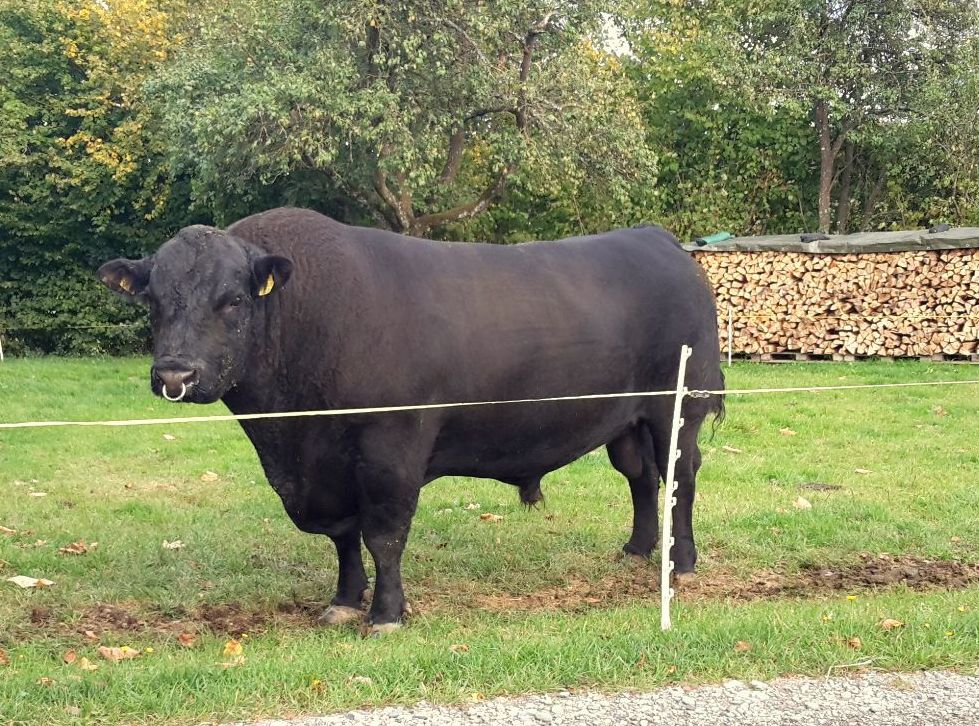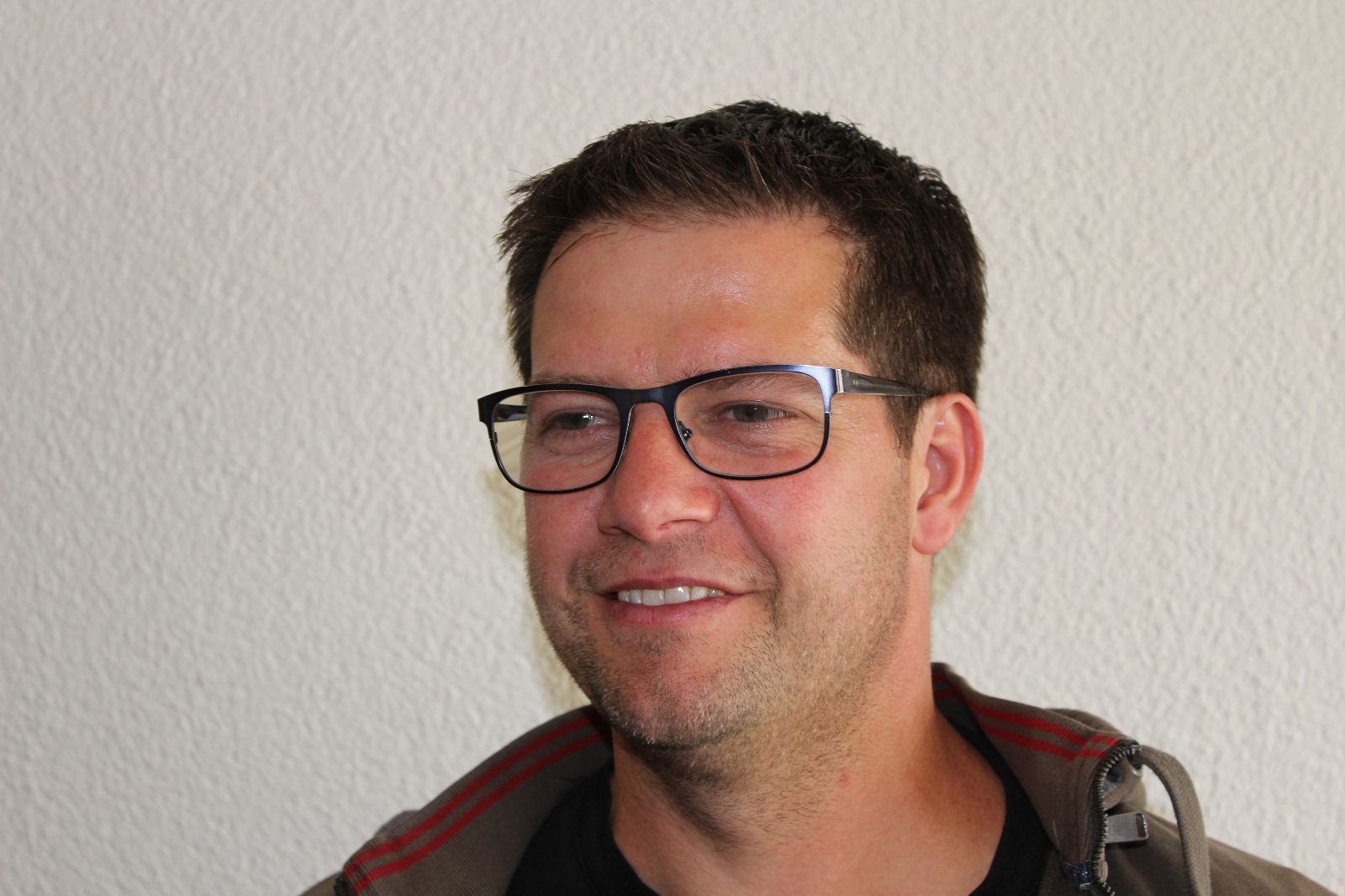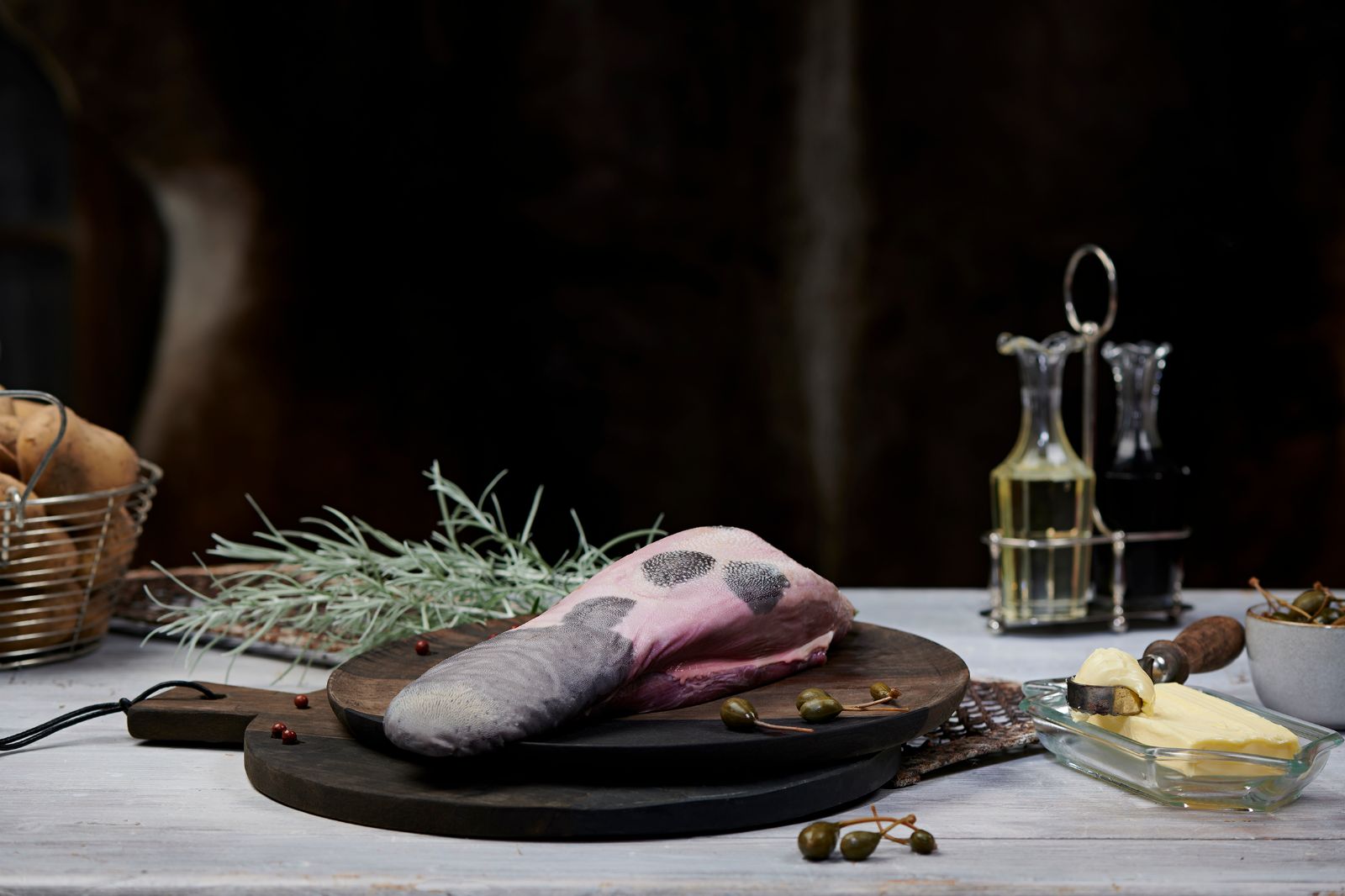Figuring out «Muni»
Bulls are impressive powerhouses. Muni whisperer Armon Fliri-Lüthy is not only familiar with their gentle side but also knows what can make them fly into a rage. MURIEL WILLI
In suckler cow husbandry, calves are reared alongside their mother in the herd and drink their mothers’ milk. Bulls – the calves’ fathers – are often on the scene. (Photo provided)
How many bulls are there in Switzerland and, in this context, how many cows?
As a member of Suckler Cow Switzerland, I can only quote ‘our‘ figures. At the end of 2022, there were around 3,200 registered beef breeding bulls and some 100,000 registered suckler cows nationwide.
Do bulls really react aggressively to a red rag?
The colour red as such does not trigger any aggressiveness in bulls. This is all the more true as cattle, which include bulls, cows and calves, have difficulty seeing the colour red, unlike other colours. What can, however, catch the animals’ attention is the movement and contrast of the rag.
What do you think of bullfights as they are still staged in southern countries?
What is traditional there is unimaginable here with us.
Where does the term «Muni» come from in Swiss German?
In the past, many villages had their own community breeding bull, a so-called Munizipalstier (municipal bull), which villagers could borrow. This is probably the source of the Swiss German word Muni.
What is the origin of unusual bull names like Hospice-DOLOMITE-P?
Breeders compose bull names in different ways. The first letter may be based on the sire, the dam, the dam’s sire, the name of the breeder or the breeding farm. The “P” stands for genetically hornless. Thus, the above name means that the bull “DOLOMITE” comes from the breeding farm “Hospice” and has no horns by nature.
What decides whether a calf is allowed to grow into a bull?
Breeders’ decisions to use bull calves for breeding depend on many factors, such as pedigree, a calf’s own performance, market demand, character traits, and the space and time available on the breeding farm.
What is more common in Switzerland – artificial insemination or natural insemination?
In suckler cow husbandry, natural insemination is predominant, whereas with dairy cattle, artificial insemination is the most widespread method.
How much does insemination cost?
There are two cost components with artificial insemination: the semen transfer, which amounts to some CHF 30, and genetics, that is the semen, which ranges from CHF 12 to CHF 120.
Do bulls sometimes run freely on suckler cow ranges crossed by a hiking trail?
Nowadays, many hiking trails are fenced off at great expense. However, since cow pastures are the natural habitat of our cow herds, a bull may be running along with the herd.
If a bull suddenly appears in front of me, what is the best way to react?
Keep your distance, don’t attract unnecessary attention, and calmly walk around the bull or the herd. If you have a guide dog with you, keep it on a short leash.
Are there often accidents on farms where a person is attacked by a bull?
Fortunately, accidents involving bulls are rare. But every accident is one too many.
How much does a fully grown Angus bull weigh?
Between 1000 and 1200 kilos.

A fully grown Angus bull weighs between 1000 and 1200 kilos. (Photo provided)
About how much will a beef breeding bull cost me?
At the bull market for beef cattle breeds number 96, bulls sold for an average of CHF 5800 francs.
What is the purpose of nose rings? Don’t they hurt bulls?
Bulls are very strong. Nose rings are aids making it safer to approach and handle bulls, for example when changing locations. However, bulls must never be left tied to a nose ring. According to the Animal Welfare Ordinance, bulls over 18 months of age must wear a nose ring. There is no need for nose rings if, before a change of location or before slaughter, the bulls were mainly kept outdoors in a herd or in loose pens as a group and if special precautions are taken for safe transport and unloading. Nose rings are like nose piercings with humans: they don’t hurt unless you pull on them.
Do bulls really paw with their front legs when they want to attack?
Pawing is a threatening gesture that must be taken seriously. By the way, cows also display the same behaviour.
How much hay or grass do bulls eat per day?
Fully grown bulls can eat about twelve kilograms of hay.
Do all bulls have horns?
Depending on the breed, bulls are horned or naturally hornless. With horned breeds, however, both bulls and cows have horns.
What is a «Köfferli-Muni»?
This is a colloquial term for an insemination technician who performs artificial semen transfers on cattle.
What happens to Munis awarded to wrestling festival winners as live prizes?
Most wrestlers sell the Munis to farms where the bulls are used for breeding.
How old can bulls get?
Up to ten years old. However, some animals live considerably longer.
How do bull markets work?
Breeding companies select bulls with the desired basic performance and pedigree requirements then halter train them. At the auction site, experts provide ‘linear’ descriptions of the bulls, numerically evaluating various characteristics such as size, length and muscling. A minimum price is set with the auctioneer. At the auction, buyers can bid in hundred-franc increments starting with the minimum price until the auctioneer awards the contract to the highest bidder. At our beef cattle auctions, you have a choice between onsite and online bidding.
What information can you get from ear tags?
Every bovine animal must wear ear tags in both ears with the so-called TVD number. TVD stands for Tierverkehrsdatenbank (Animal Traffic Database). It registers the farm on which the animal is located and makes it possible to trace animals – a key feature in case of epizootics. The ear tags themselves display a country code, for example “CH” for Switzerland, along with a twelve-digit number that is assigned only once per country and stands clearly for the corresponding animal, like our number on ID documents.
Do bulls in catalogue photos sometimes actually wear tail toupees?
No, our bulls certainly don’t wear tail toupees.
What does a Muni whisperer do?
He communicates with the bulls on a non-verbal basis, exclusively through body language. This requires experience in dealing with bulls, a lot of practice and, above all, enjoyment in working with animals.
Armon Fliri demonstrating what a Muni whisperer does with a Charolais bull at a beef event. Patience and empathy are required. (Photo provided)
What is the breed with the most Munis approved for breeding in Switzerland?
Among beef cattle in Switzerland, it is the Limousin breed.
Which breed has the least?
The herd book of Suckler Cow Switzerland features a total of 38 breeds. There are some small herd populations, such as Gasconne, Gelbvieh, Bazadaise, Parthenaise, Shorthorn, Speckle Park or Welsh Black.
What are sired bulls?
There are no sired bulls, but with artificial insemination there are sired semen cans from some bulls. This means that farmers can choose between female or male calves. Although this method is not 100 per cent reliable, it offers very high probability.
Is it true that you can also borrow or rent a bull?
Yes. For a leasing fee, farmers can rent these bulls for cow breeding.
How do bulls differ on the outside from cows?
Because of the external sexual organs. Bulls have a scrotum and teats but no developed udder, whereas cows have a vagina and a developed udder, at least when they give milk. In addition, bulls are much larger and more powerfully built than cows.
Do most farmers use a catalogue to choose the bull they want to mate their cows with?
With artificial insemination, yes. For each insemination, the farmer chooses the right bull for the cow to be inseminated from the bull catalogue. With natural insemination, the farmer either picks a suitable breeding bull at auction using the auction catalogue or selects the right animal on a colleague’s farm. Subsequently, this single bull usually covers all or at least most of the entire cow herd.
Where does the saying “to take the bull by the horns” come from?
A little Internet research reveals that it means to tackle a task head-on. This saying, already in use in the 19th century, implied that you should tackle a bull, figuratively speaking a problem, where its defences are strongest, that is, by the horns.
How fast can bulls run?
Certainly a bit faster than humans!
Do bulls moo the same way as cows?
Their moos are lower pitched.
How strong are bulls?
A fully grown bull is an impressive powerhouse!
Bulls of the Limousin breed are very common in Switzerland. (Photo: Daniela Hunger)
Do bulls have enemies? Can wolves also pose a threat to adult bulls?
Wolves prefer to seek easier prey.
The children’s book “Ferdinand the Bull” is about a particularly friendly bull. Do bulls also have a gentle side?
Bulls as such are neither evil nor aggressive. They can be very calm and even-tempered. Within the herd, however, they have a role to play. They not only take care of offspring but also defend their herd in case of danger. When a cow is in heat, a bull defends its mate against both quadrupeds and bipeds.

Together with his wife Johanna, Armon Fliri-Lüthy manages the Sonnenberg organic farm in Unterengstringen. In addition to the Angus breeding herd, the farm features a horse boarding facility and a vineyard. At Suckler Cow Switzerland, Armon chairs the Beef Cattle Herdbook Commission. He has further made a name for himself as a Muni whisperer.
This article first appeared in TIERWELT 15/2023.






